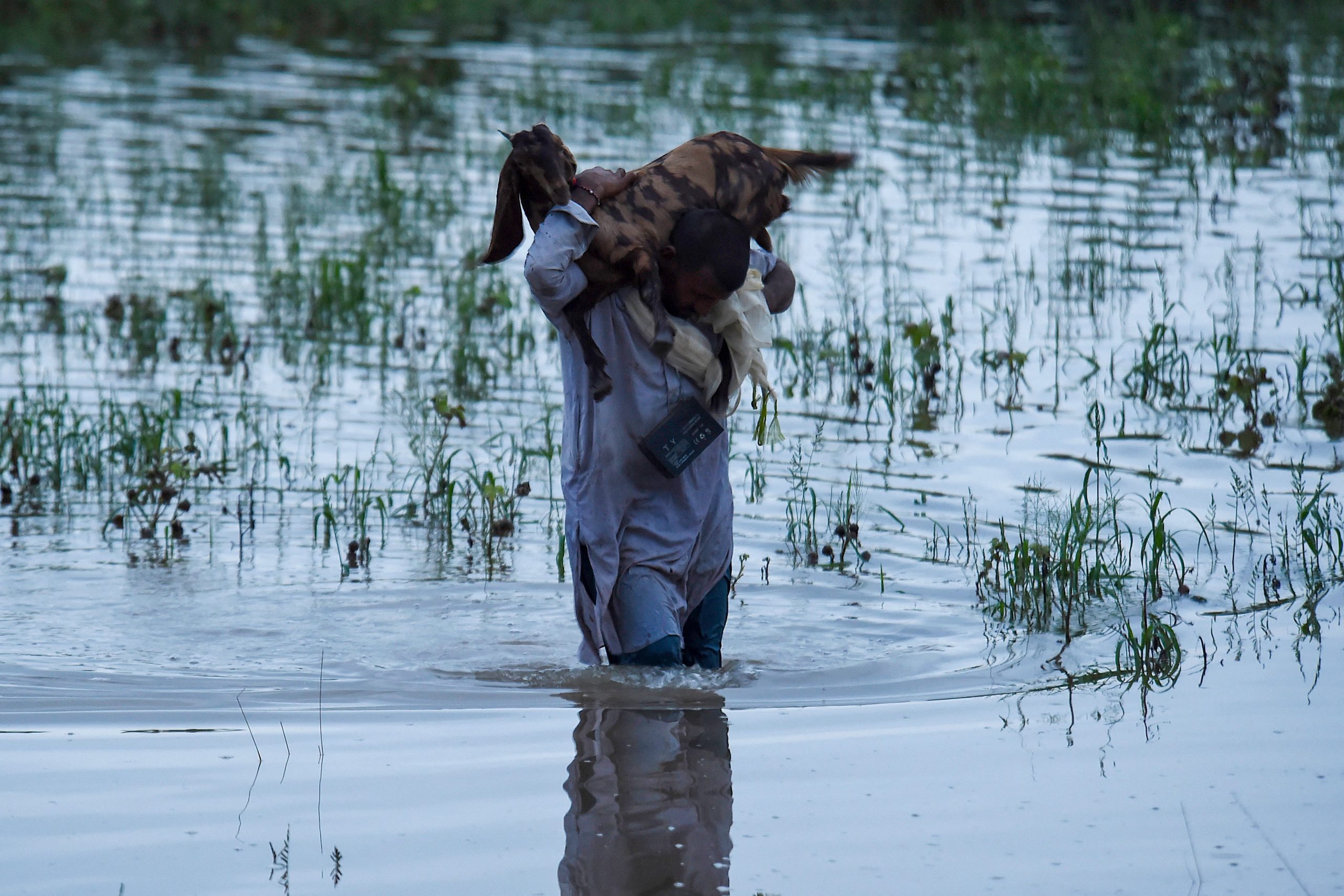Pakistan has continuously rated highest among the countries most vulnerable to the effects of climate change, despite it being responsible for less than 1% of global carbon emissions.
Qatar Red Crescent Society (QRCS) has allocated $100,000 from its Disaster Response Fund to offer support to Pakistan’s flood victims, where more than 30 million have been affected.
The immediate humanitarian intervention plan entails giving emergency shelter and household goods to 200 flood-affected families in Mirpur Khas District, Sindh Province, totalling 1,400 individuals.
Additionally, 200 emergency shelter tents, 200 family hygiene kits, and 1,000 blankets will be distributed.
Flood tolls
The delivery of aid comes as authorities in Pakistan declared a “national emergency” with the death toll nearing 1,000. Figures suggest more than 30 million have been “badly affected” as monsoon rains continue to strike the South Asian nation.
According to the National Disaster Management Authority (NDMA), at least 937 people have died since mid-June, including 343 children, with major parts of the southwestern province of Balochistan still underwater, bringing back memories of the catastrophic 2010 floods.
Prime Minister Shehbaz Sharif has postponed his official visit to the United Kingdom as he seeks assistance from allies and international organisations to deal with the worst flooding in decades.
The United States, the United Kingdom, the United Arab Emirates, and others have contributed to a monsoon disaster appeal, but an interior ministry spokesman told the BBC that more donations are needed.
Every year, Pakistan suffers during the June-August monsoon season, but 2022 has been exceptionally harsh. Normally, the rainy season begins in July, but this year, it began raining strongly in June, causing sever flooding.
Between late June and mid-July, about 300 people were killed.
According to the Pakistan Meteorological Department (PMD), the average rainfall in Pakistan for the three-month period of July 1 to September 30 is 140.9 mm. Pakistan was 11.3% short of this target in year (2021), with 125 mm of rain.
The country received up to 354.3 mm of rain this year between July 1 and August 26, according to the PMD. This was 211% higher than the average of 113.7 mm during this time period.
The southern region of Sindh has been the worst affected in August, receiving 442.5 mm of rain this month until the 26th, which is 784% higher than the 50 mm typical for the period August 1-26.
Balochistan is the other hard-hit region, with 129.7 mm of rain falling between August 1 and 26, a 522% increase above the region’s typical 20.9 mm for this time period.
Climate change
Extreme weather events have been cited as proof of climate change across the world.
After a summer of record-breaking temperatures and enormous bush fires, Europe is currently experiencing its worst drought in 500 years. China and parts of the United States are also experiencing drought.
According to the Global Climate Risk Index, which analyses the human and economic toll of big extreme weather events, Pakistan has continuously rated among the countries most vulnerable to the effects of climate change.
This is despite it being responsible for less than 1% of global carbon emissions.







